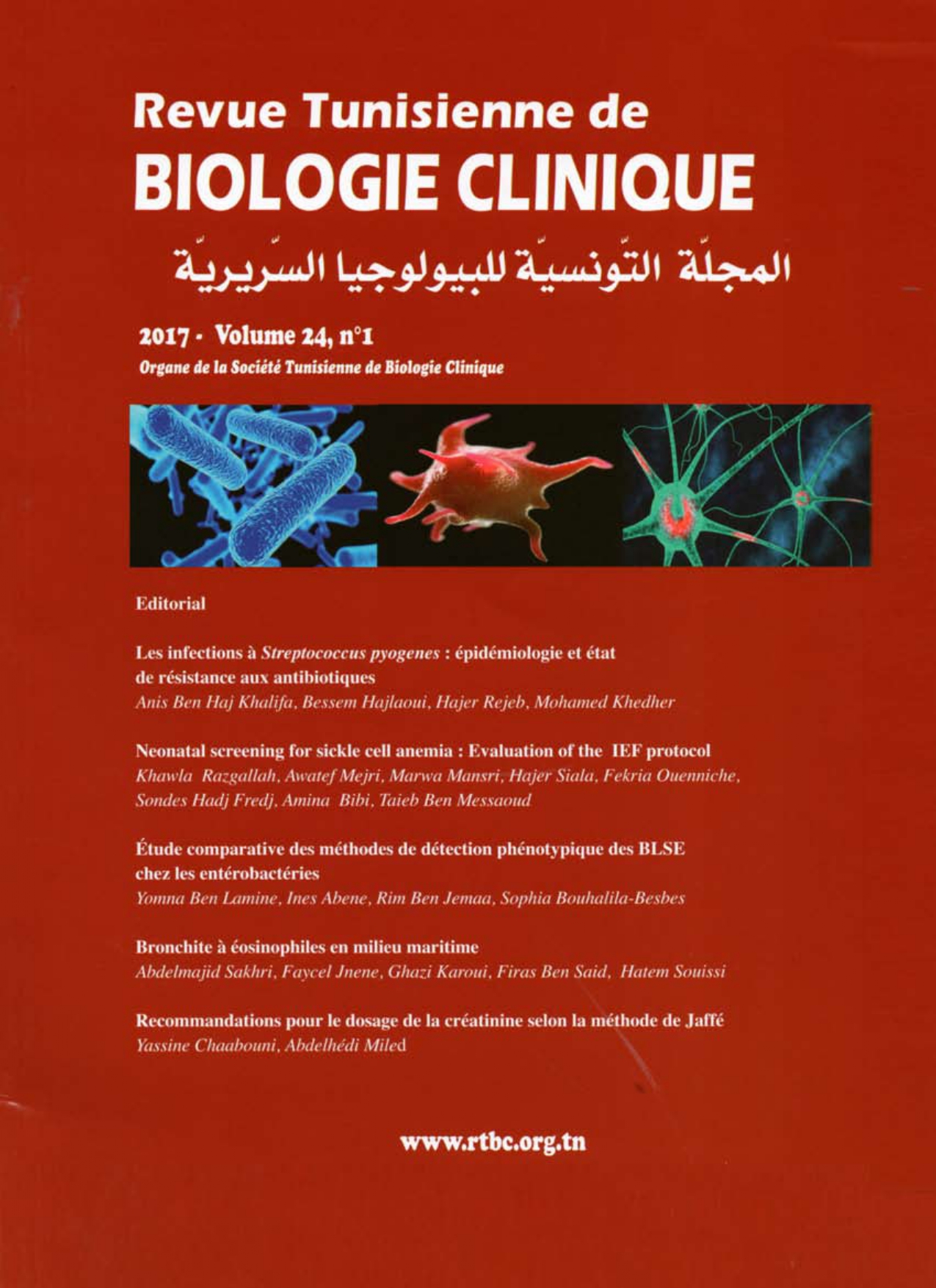Résumé
Introduction : La drépanocytose est une maladie génétique à transmission autosomique récessive, dominée par une anémie sévère, des crises douloureuses et une grande susceptibilité aux infections bactériennes. La prise en charge prématurée de l’homozygote (SS) est le meilleur moyen de minimiser la sévérité clinique et cela passe par le dépistage néonatal. Plusieurs approches avaient encore été développées. Objectif : Dans notre laboratoire, huit ans après la mise en place du dépistage néonatal de la drépanocytose, nous tentons ici d’évaluer la technique utilisée pour détecter cette maladie, l’analyse isoélectrofocalisée (IEF), et de révéler les conditions optimales qui s’y rattachent. permettent de détecter 100 % des cas. Méthodes : Ce travail a été mené sur 210 nouveau-nés nés à la maternité de La Rabta. Deux types d’échantillons de sang ont été prélevés pour chaque sujet : un sang de cordon ombilical utilisé pour l’analyse HPLC et l’analyse PCR/RFLP et des échantillons de sang séché utilisés dans l’IEF suivis d’une confirmation par HPLC. Résultats : L’HPLC a révélé 10 échantillons parmi 210 testés, confirmés par la méthode moléculaire : 8 hétérozygotes (AS) et 2 hétérozygotes (AO), tandis que l’analyse IEF n’a révélé que 3 cas de drépanocytose, un homozygote S/S et un hétérozygote (AO). Conclusion : La différence entre les résultats obtenus montre que la détection homozygote (SS) ne peut pas être manquée par l’analyse IEF. L’optimisation doit être apportée à cette technique pour assurer une détection complète de l’ensemble des cas de porteurs βS en concentrant les échantillons.

Ce travail est disponible sous la licence Creative Commons Attribution 4.0 International .
(c) Tous droits réservés Khawla Razgallah, Awatef Mejri, Marwa Mansri, Hajer Siala, Fekria Ouenniche, Sondes Hadj Fredj, Amina Bibi, Taieb Messeaoud 2017

